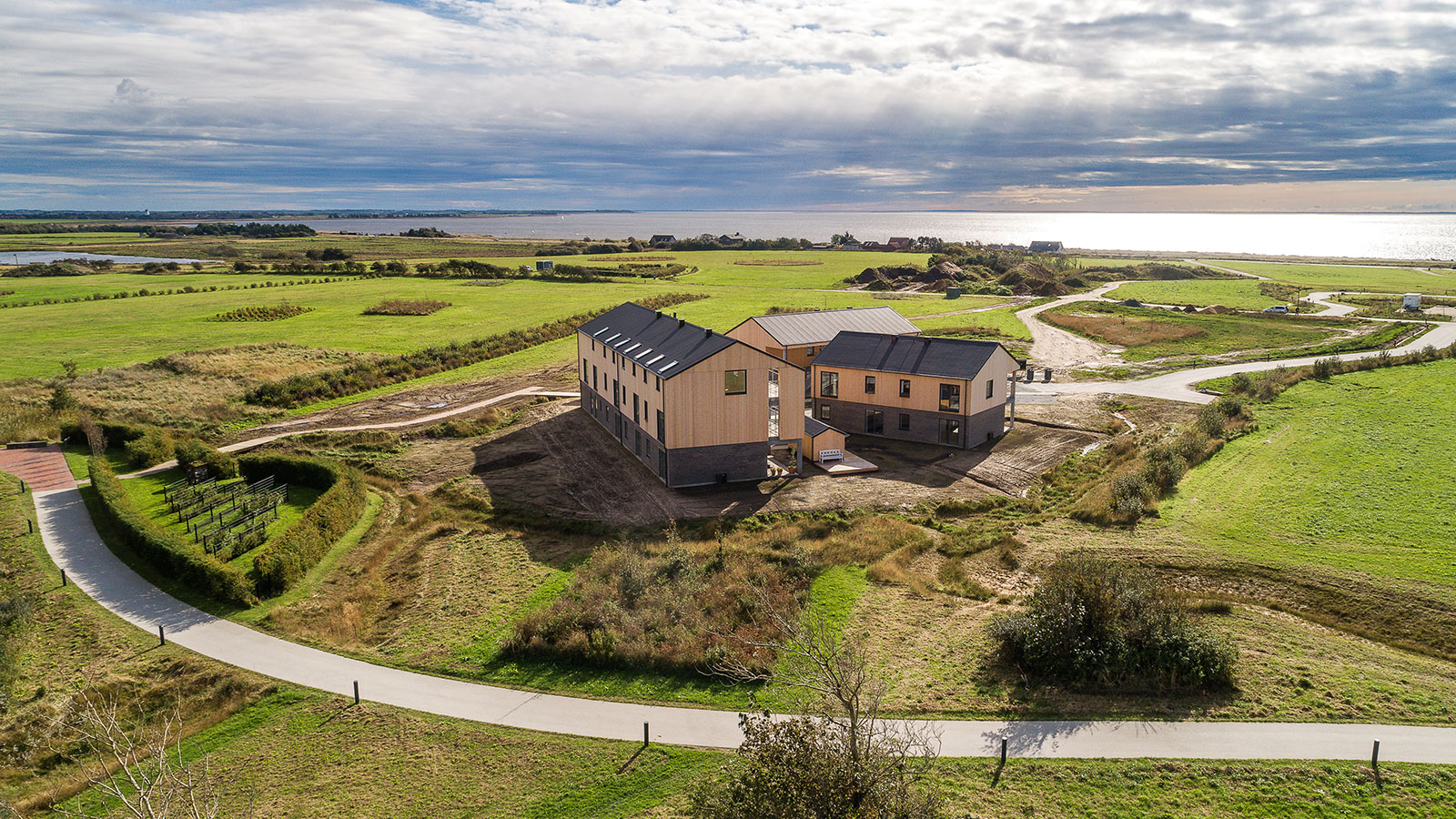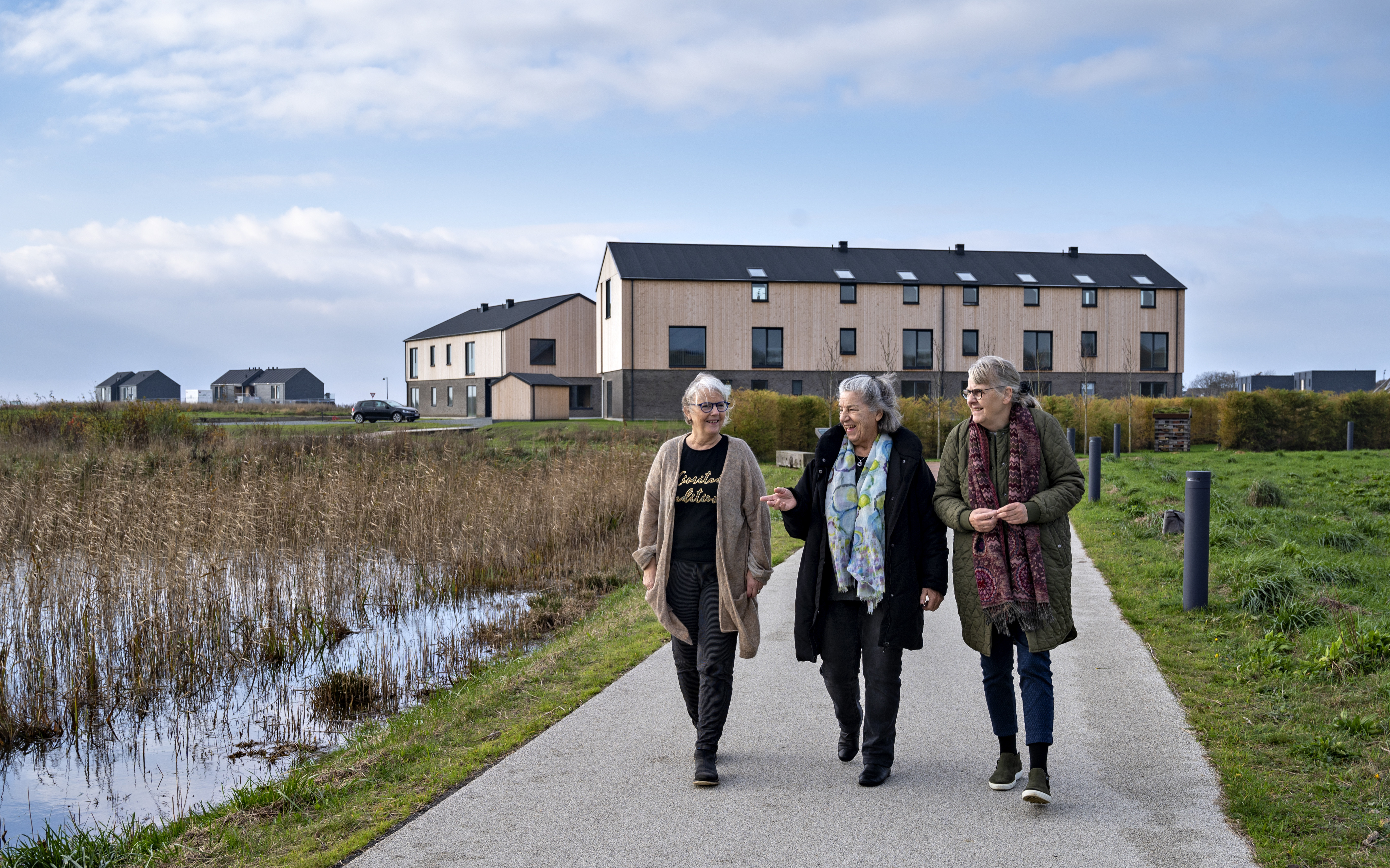Log ind info
How can communal housing for the elderly help foster togetherness, improve quality of life and reduce loneliness among the elderly? This is a question which the development of innovative communal housing for the elderly in Ringkøbing’s new residential neighbourhood seeks to provide answers to. The communal housing for the elderly was built by Realdania By & Byg as part of Realdania's project “Space and communities for the elderly”.

Loneliness is an increasing problem among the elderly. But when elderly people live together their quality of life is improved and they feel less lonely. What is more, a third of elderly people express an interest in living in communal housing. The problem is, there is not enough, and the waiting lists are long.
The development of experimental communal housing for the elderly of the future in Ringkøbing’s new residential neighbourhood is seeking to change that.
The communal housing for the elderly in Ringkøbing is one of nine such projects being developed by Realdania all over Denmark as part of the initiative "Space and communities for the elderly”. It is an initiative that sets out to test new solutions and approaches to developing communal housing throughout Denmark with a view to reducing loneliness among the elderly and meeting the growing demand for communal housing for the elderly. The eight other senior house shares are being developed in collaboration with pension funds and housing associations, while the communal housing for the elderly in Ringkøbing is an experimental construction built by Realdania in collaboration with its subsidiary Realdania By & Byg as contractor.
The development in Ringkøbing is an opportunity to try out new solutions, which foster everyday community in attractive surroundings and make for a more enjoyable and easier life and improve the quality of life for the elderly:
The communal housing for the elderly in the In the Middle of Nature neighbourhood essentially turns the classic communal house model - based on private flats surrounding a central communal building - on its head. Instead, the development comprises three 2-3 storey buildings in which 14 small private flats tailored to the needs of the residents are combined with attractive communal facilities. The goal is to encourage the development of everyday community rather than occasional “get-togethers”. In this way, the development will help ensure that all residents, including the less outgoing members of the community, have company in their everyday lives.
In the spaces between and around the three buildings, the natural surroundings will serve as a focal point for outdoor activity and everyday community. A key aspect of the In the Middle of Nature project is that the natural surroundings were developed before the first houses were built, and they serve as a communal garden for the residents of the new neighbourhood. All of the residents, both in the communal housing for the elderly and the rest of the neighbourhood, have private balconies or porches and direct access to the surrounding nature. However, instead of tending to their own little garden, residents can use the extensive green area with its meadows, lakes, berry gardens and orchards as a meeting place and venue for a range of activities together with neighbours, housemates and younger generations.
The communal housing for the elderly is being built to a budget that is achievable for private contractors and housing associations, so that it can serve as inspiration and offer solutions for similar projects in other parts of Denmark. Furthermore, the majority of the homes will be affordable for anyone on a state pension, ensuring the communal housing is accessible for a wide range of tenants.
New tenants will be able to move into the communal housing for the elderly in Ringkøbing from 1 October 2020.

Photo credit: Søren Palmelund
Central Jutland
2017-2020
Experimental new buildings